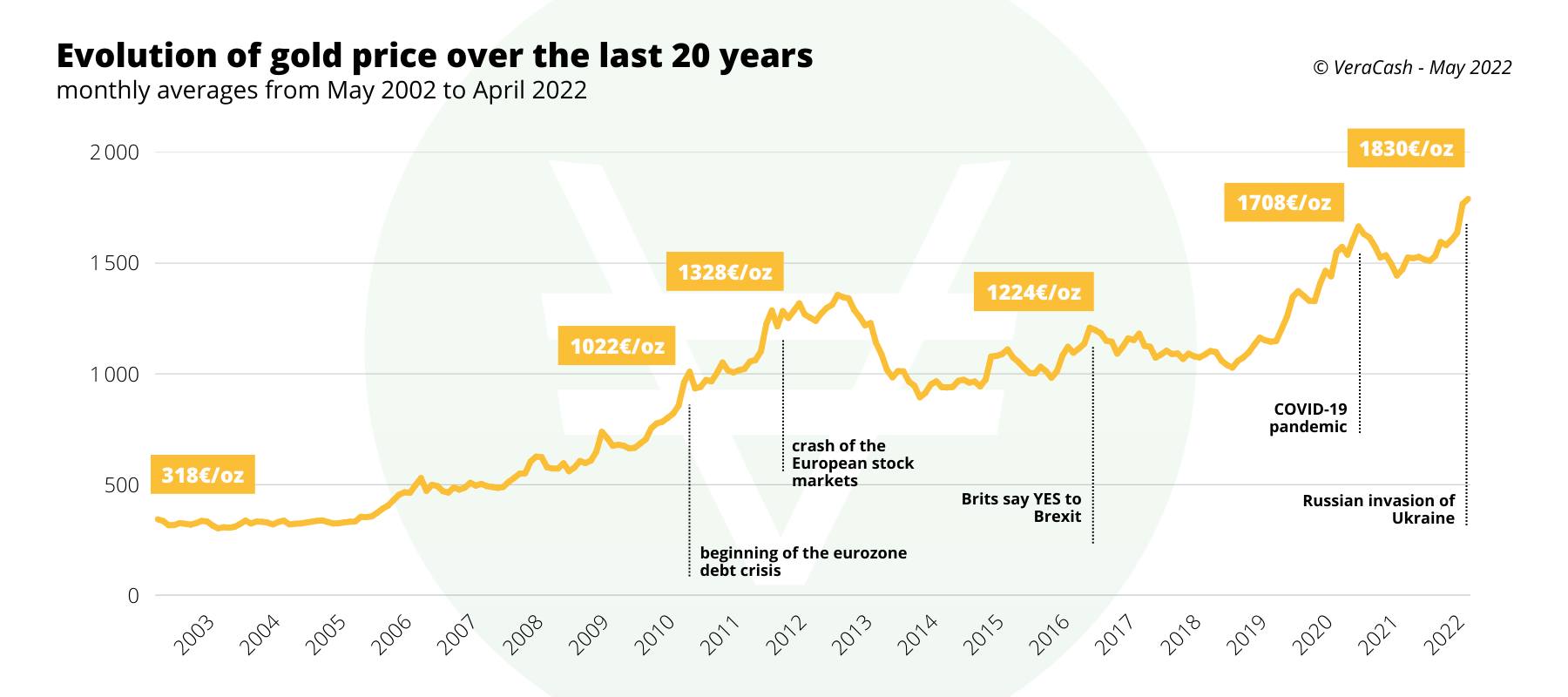- Home
- Gold price
- How is the price of gold fixed?
How is the price of gold fixed?

The process of fixing the price of gold is both complex and fascinating, because it is unique in the world of finance. Historically, its value was linked to that of silver metal and the goods against which it could be exchanged. Today, gold remains an essential investment asset, as it has unique physical characteristics that give it an intrinsic value that is independent of the markets.
A price negotiated by mutual agreement
Gold does not belong to any entity, company or state. It is only slightly influenced by national economies or currency exchange rate fluctuations (except as a safe haven if needed), and its price does not depend on a complex calculation like the value of shares on the financial markets, for example.
In fact, it is simply the result of constant negotiation (several times a day!) between a few key players in the global gold market.
In practical terms, this market operates on an over-the-counter (OTC) basis: transactions and quoted values are negotiated directly between the parties involved, without going through a stock exchange or other intermediary. More specifically, these negotiations take place between the members of a group called the LBMA, or London Bullion Market Association, which is based in London and is the world reference for gold prices.
The London Fix
In 2023, the LBMA’s members will include 12 major international investment banks, known as Market Makers, which report their latest gold buying and selling prices:
- BNP Paribas
- Citibank N A
- Credit Suisse AG Zurich
- Goldman Sachs International
- HSBC
- ICBC Standard Bank Plc
- JP Morgan Chase Bank
- Merrill Lynch International
- Morgan Stanley & Co International Ltd
- Standard Chartered Bank
- Toronto-Dominion Bank
- UBS AG
In all, the LBMA has around 150 members, including banks (other than Market Makers), refiners, precious metals producers, traders, etc., from 24 different countries (including France) on every continent.
For over a century, some or all of these members have met daily in conference calls to determine the LBMA Gold Price, which is published twice a day at 10.30am and 3pm London time. This official quotation is known as the fixing.
What is the fixing based on?
- Like any traded market, the price of gold is strongly influenced by supply and demand:
– Supply includes mine production, recycling and the sale of central bank reserves
– Demand comes mainly from jewellers, investors and central banks, who buy gold in the form of coins and bars to diversify their reserves and support their currencies. - The price of gold is also heavily influenced by the exchange rate of the US dollar. As an ounce of gold is quoted in dollars, a rise in the US currency makes the metal more expensive for buyers using other currencies, which can reduce demand and therefore drive down the price of gold.
- Finally, gold is often seen as a safe haven in times of economic uncertainty. When investors are worried about the economy, they often buy gold, which can push up the price of the precious metal.
It is therefore a complex set of factors that interact to determine the price of gold.
And the spot price?
Apart from London, other market places essentially manage what is known as the spot price of gold, which is used mainly to fix the value of securities and other derivatives based on gold at a given moment.
Whether we are talking about the New York Stock Exchange or the Shanghai Stock Exchange (whose importance has grown steadily in recent years due to the tremendous economic growth of the Asian market), the price of gold that they continuously display is used to value investments in paper gold, as well as hedging products, which are the subject of classic stock market speculation operations based on estimates of the future price of gold (or ‘futures’).
By convention, most of the world’s precious metal players consider that only the fixing (or LBMA Gold Price) serves as a reference for determining the price of an ounce of physical gold, i.e. the metal contained in coins and ingots in particular. London is the venue for 75% of the world’s gold trading, between LBMA clients, central banks, mining companies and private banks.